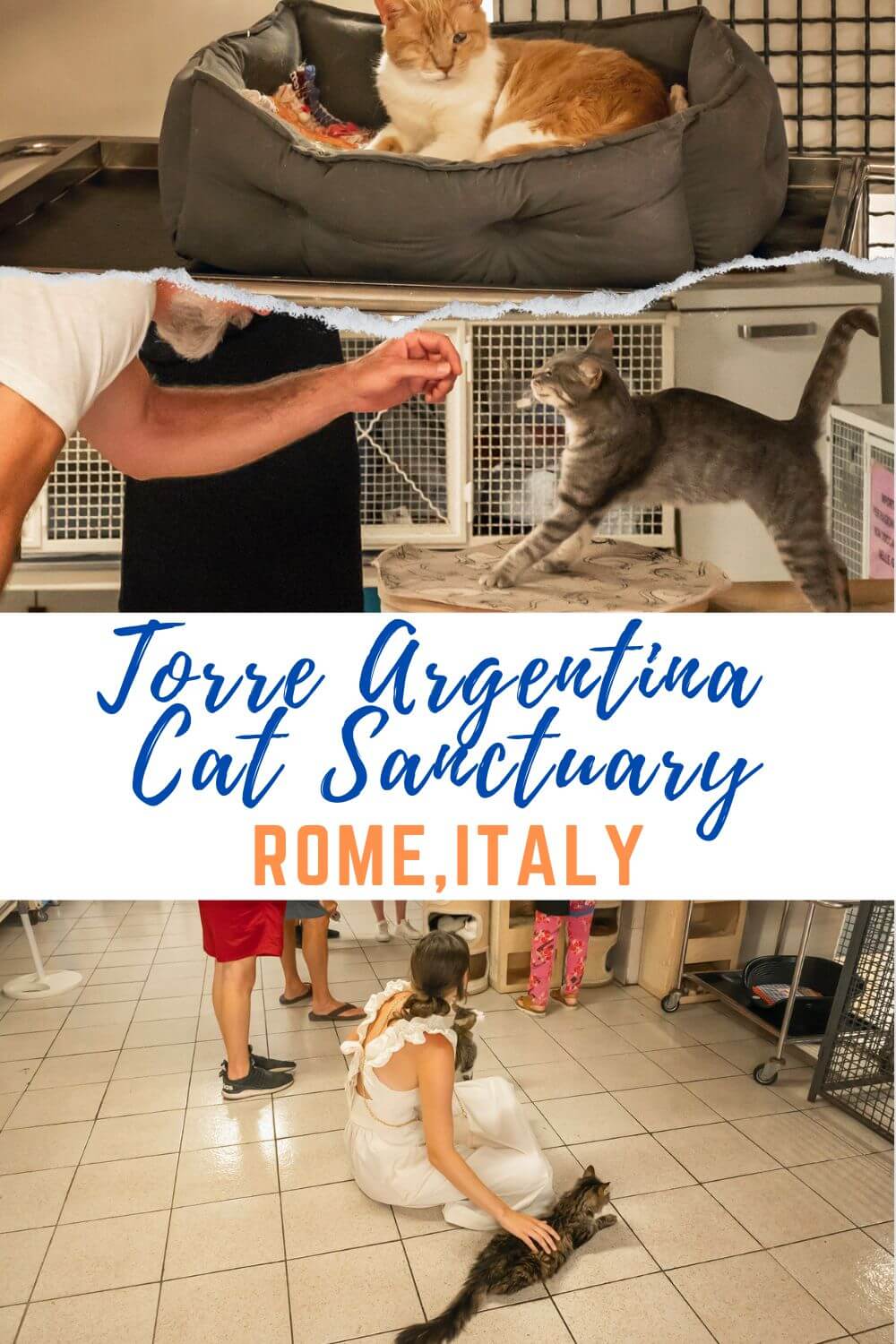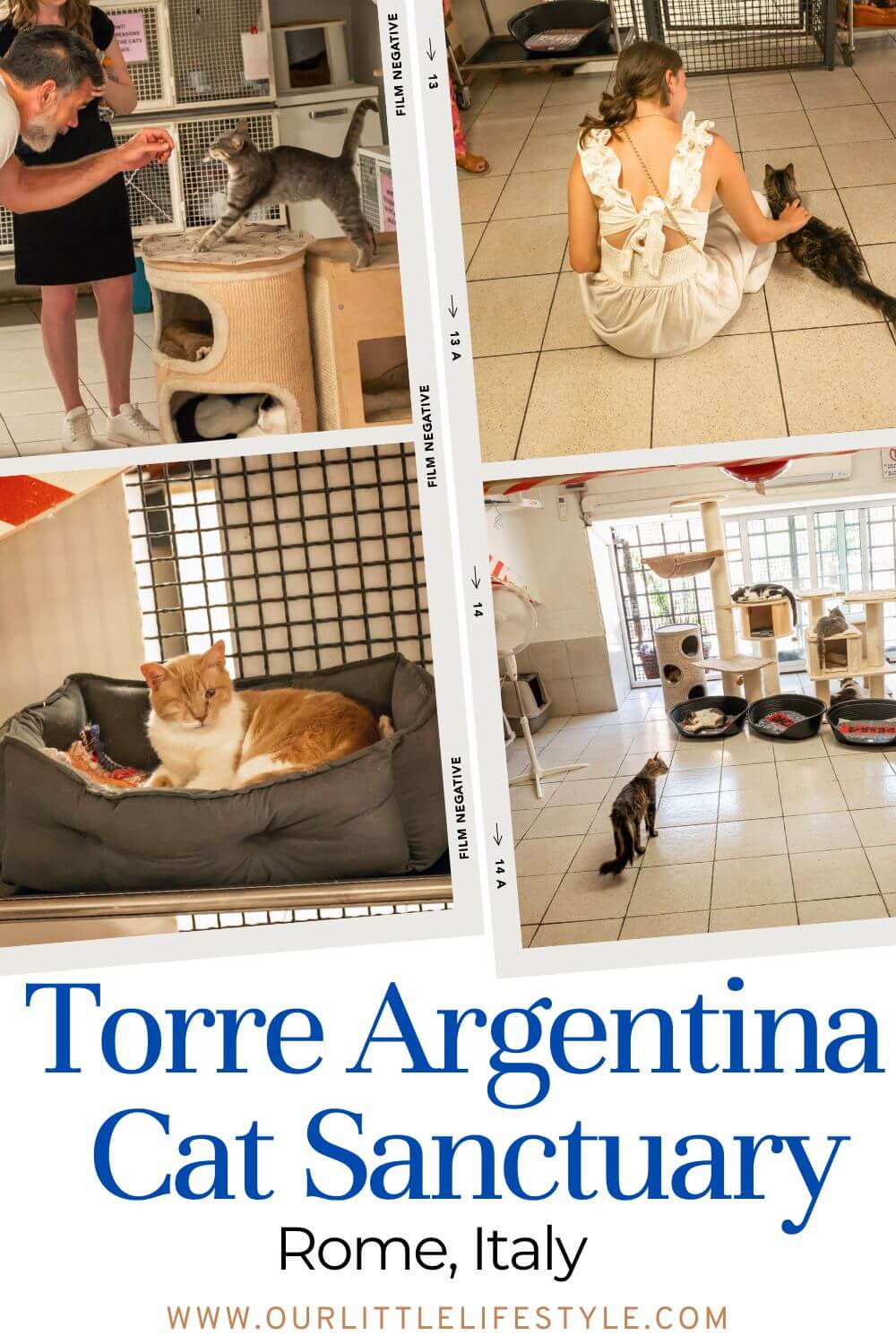We may earn money or products from the companies mentioned in this post. As an Amazon Associate, I earn from qualifying purchases.
We just returned home from a wonderful summer trip to France and Italy where we spent 5 days in Rome. Upon returning home, we all shared the highlights of our trip, and all four of us fondly recalled the time we spent loving on the cats in Rome.
What exactly do we mean? Let me tell you all about it!
Stumbling Upon The Cats In Rome
As we wandered around the streets of Rome, not far from where we stayed in the Trastevere neighborhood, we came across a large open-air archeological site. While we were staring out across the park-like space filled with broken stone buildings and fractured columns, we were surprised to see a cat lying in the shade. Then we saw two cats and then three cats!
It turns out, as we trained our eyes, cats were literally all over the ruins! This is how we, by total happenstance, discovered the Torre Argentina Cat Sanctuary. After a moving visit to the sanctuary, we wanted to write a post about it. We ended up going down a fascinating rabbit hole filled with ancient temples, a murdered Emperor, two famous Italian actors, and two profoundly kind modern cat ladies.
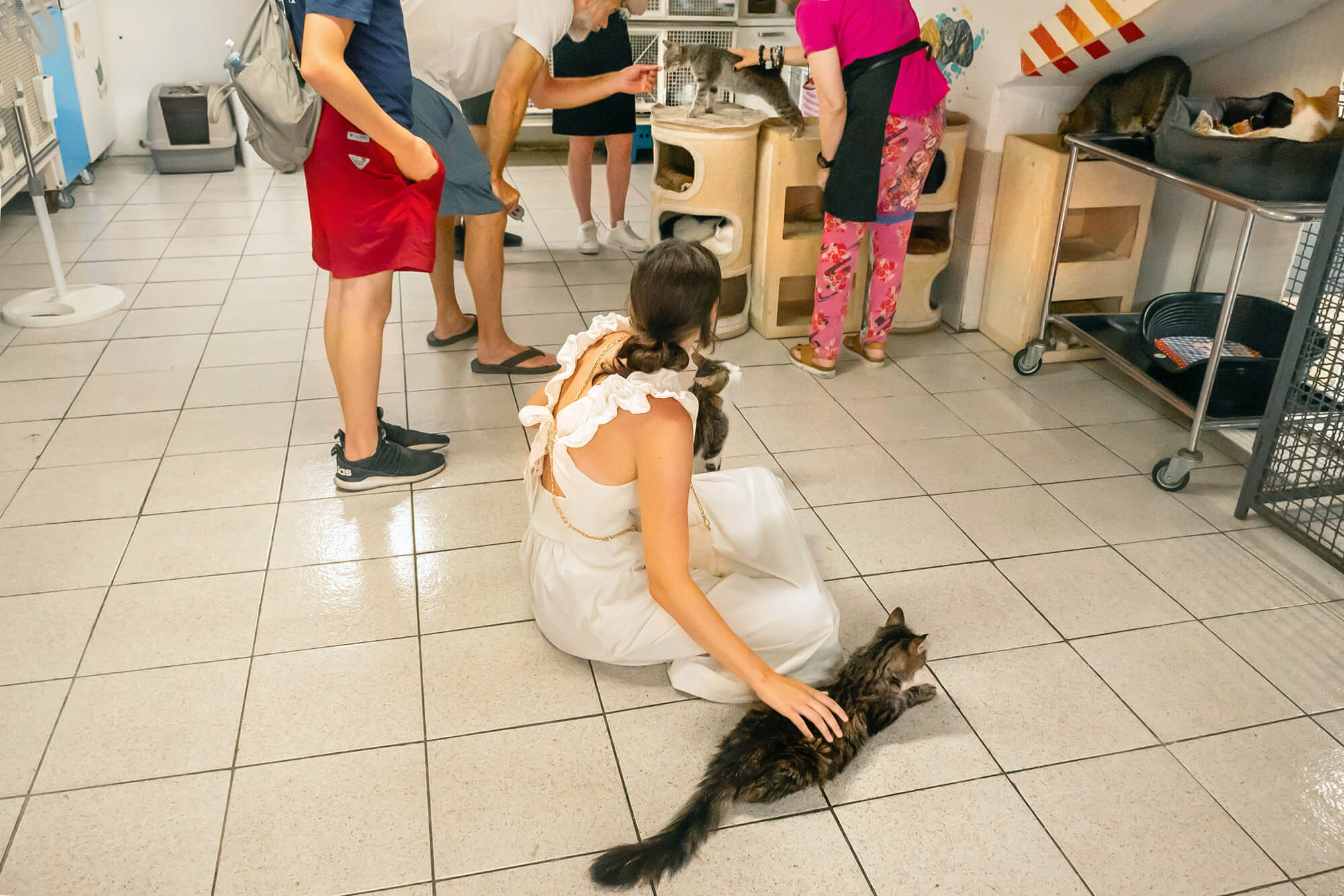
About The Torre Argentina Cat Sanctuary
The Torre Argentina Cat Sanctuary is a large cat sanctuary in the heart of Rome, Italy. It houses over 150 stray, elderly, and disabled cats. These cats have been abandoned by owners or are feral cats who have wandered in from elsewhere in the city. It’s not the only cat rescue in Rome, but it’s the largest and most well-known.
The sanctuary consists of an open-air park filled with ruins and an underground space containing a shelter for disabled and sick cats. It’s located inside the Largo di Torre Argentina archeological site. The area is a crumbling ruin now. But, two thousand years ago, it was a busy urban mall with four temples and Pompey’s Theatre. At this exact site, the renowned Roman Emperor Julius Caesar was murdered by his frenemy, Brutus, in 44 BC.


Visiting The Torre Argentina Cat Sanctuary
The entire archeological site is set about 20 feet below street level. Almost all ancient sites in Rome are buried beneath the modern city. It’s surrounded by walkways and viewing platforms where onlookers can see the site.
We discovered a set of descending stairs located from the Via Arenula corner of Largo di Torre Argentina. The cat shelter is located at the bottom of the stairs. At certain times of the day, a large Torre Argentina Cat Sanctuary sign showing a cat is placed at the top of the stairs, inviting you in.
The Torre Argentina Shelter and Cats
As we entered the shelter, hunching under a low ceiling, we immediately noticed how clean but small it was. We were greeted enthusiastically by volunteers and, although we didn’t know it at the time, by one of the sanctuary’s founders, Silvia Viviani.
The shelter has two main rooms. One room has healthy cats who are not yet ready to be released into the outside main cat colony. The other room is for disabled cats who need full-time care and cannot be re-introduced into the colony. Additionally, a small gift shop sells postcards, shirts, calendars, and other souvenirs.
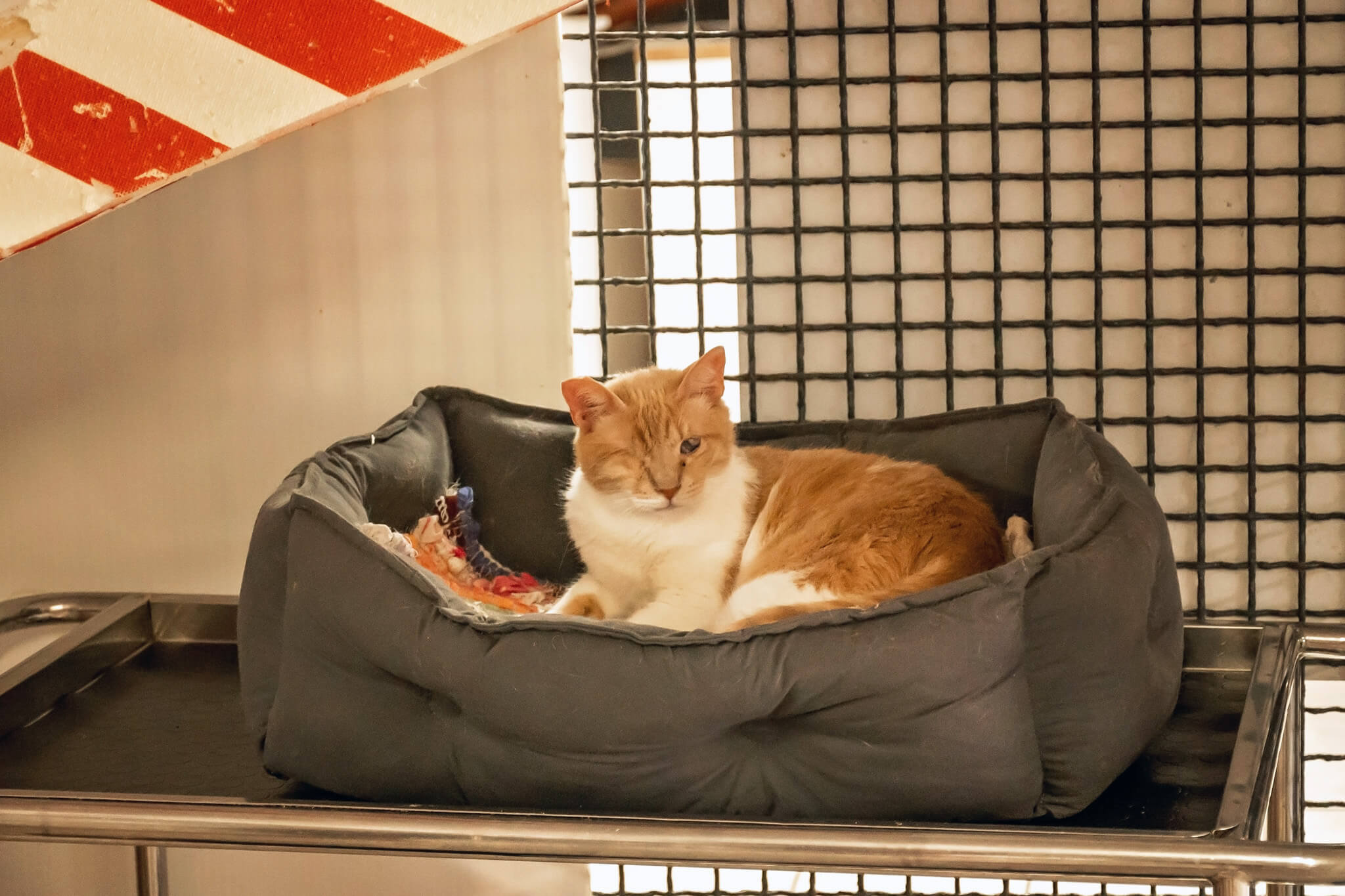

The Cats Of Torre Argentina
The shelter for sick cats is simultaneously a sad and happy place. As cat lovers, it was hard for us to see ill and disabled cats, some of whom are profoundly handicapped or at the end of their lives. But it’s a place of great love and compassion, where good people give their time and energy to ensure these cats live out their last days with comfort and dignity.
You can pet any of the cats. Most are incredibly playful, rubbing up on your legs, meowing, wanting head scratches, and plopping on the floor in front of you. We met Tip Tap, a tiny cat suffering from cerebral ataxia, a terrible condition affecting gross motor control. Tip Tap shook uncontrollably, lost his footing, fell over, got back up, and moved in a jerky series of ticks that made any movement very difficult. We gave him a lot of love and attention and a lot of head scratches!
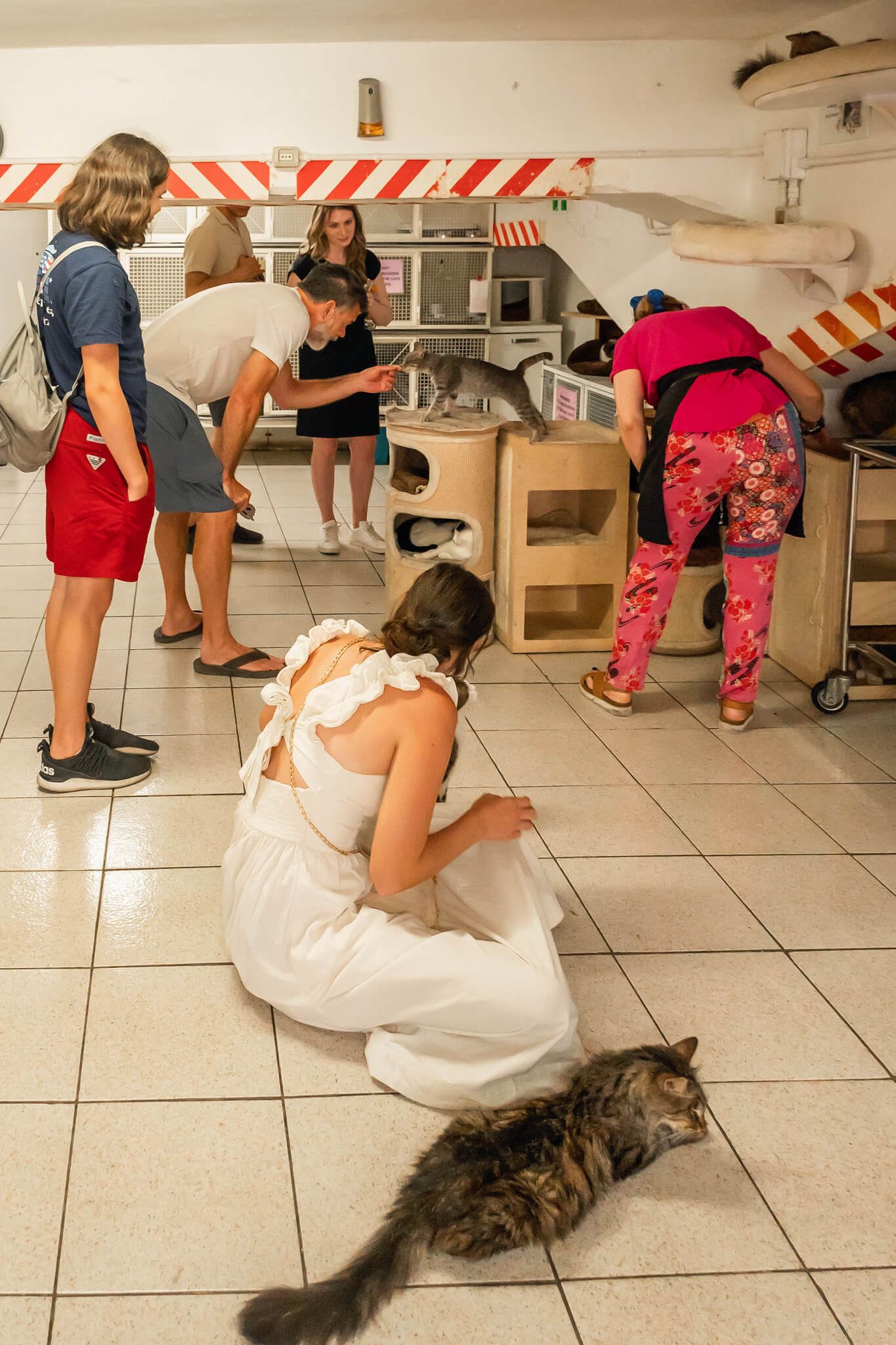
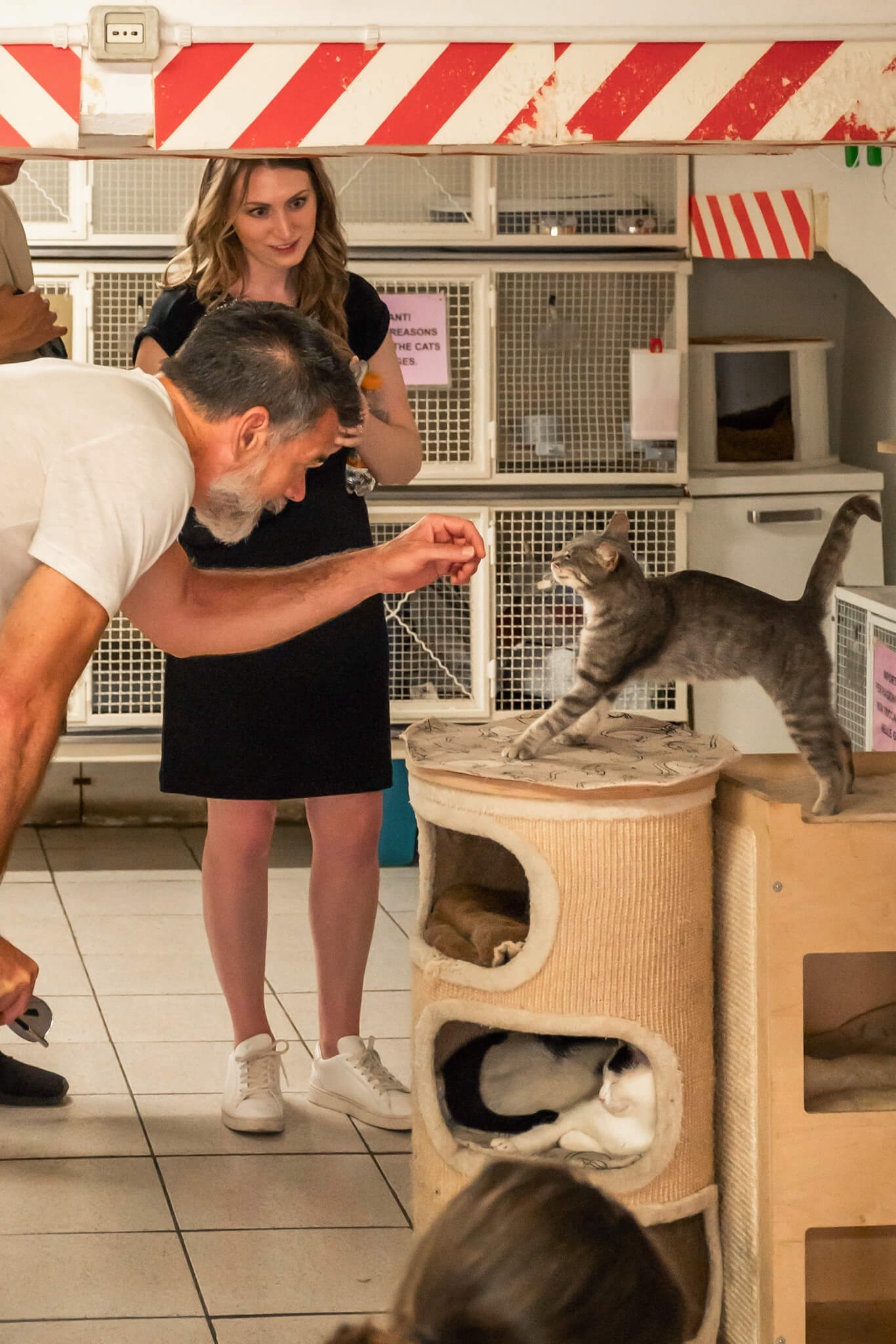
We also met a cat with no eyes. He lives in a world of darkness, but his life is filled with love and an endless stream of petting from staff and doting travelers from all over the world! While we were there, he lazily lay on the floor, at the very center of traffic, living his best life.
Jefferson is a tiny cat who is battling late-stage cancer. He’s had several surgeries to remove tumors, but as Sylvia quietly informed us, it would not be enough. Jefferson lay on the floor, breathing slowly, soaking up scratchings and pettings like they were going out of style.
Sadly, while I was researching this post, I learned from the Torre Argentina Cat Sanctuary Instagram page that little Jefferson had passed away. He left us just a day after we saw him at the sanctuary. He died peacefully in his favorite bed at the shelter. Rest in peace, sweet Jefferson.
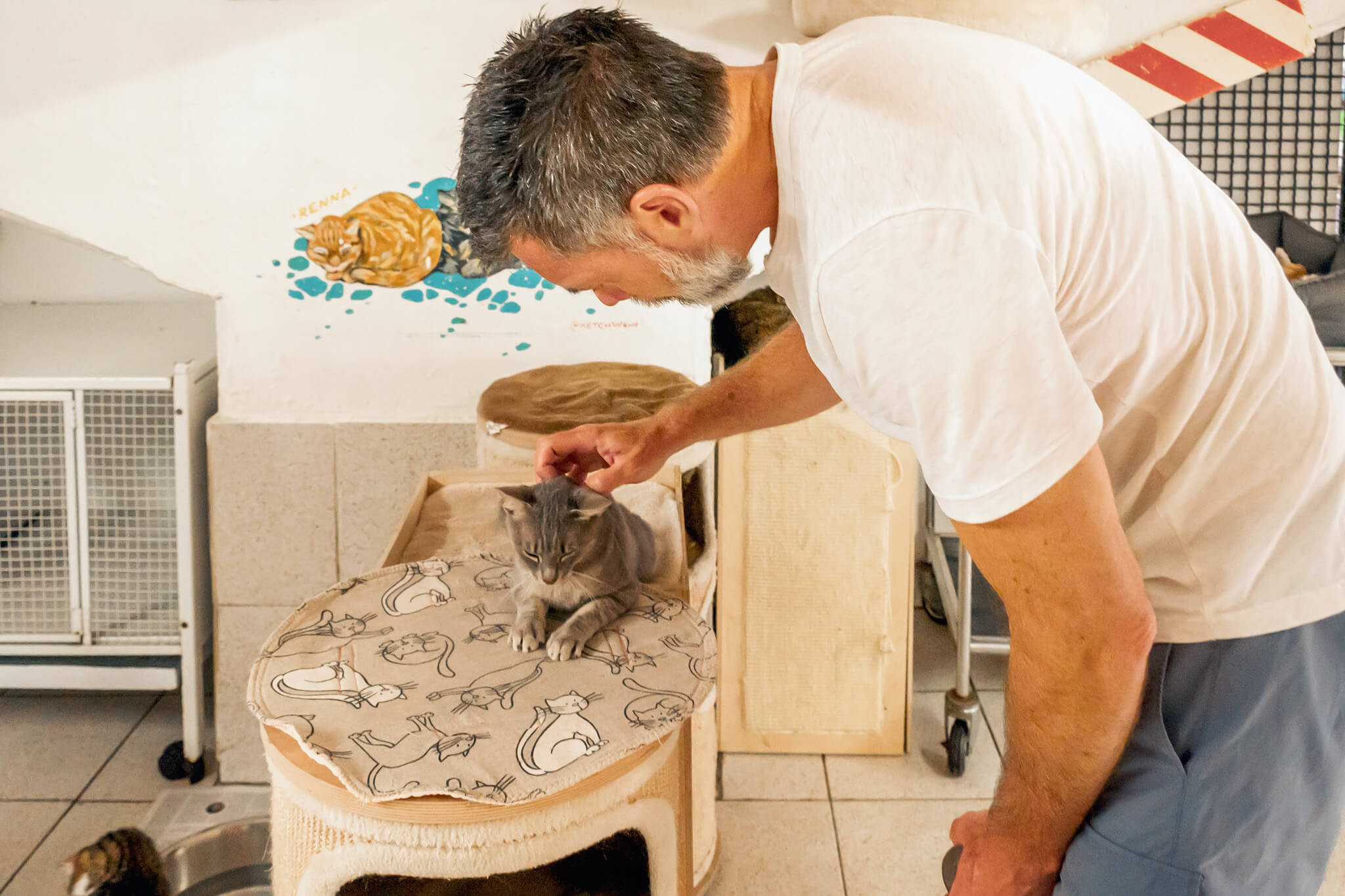
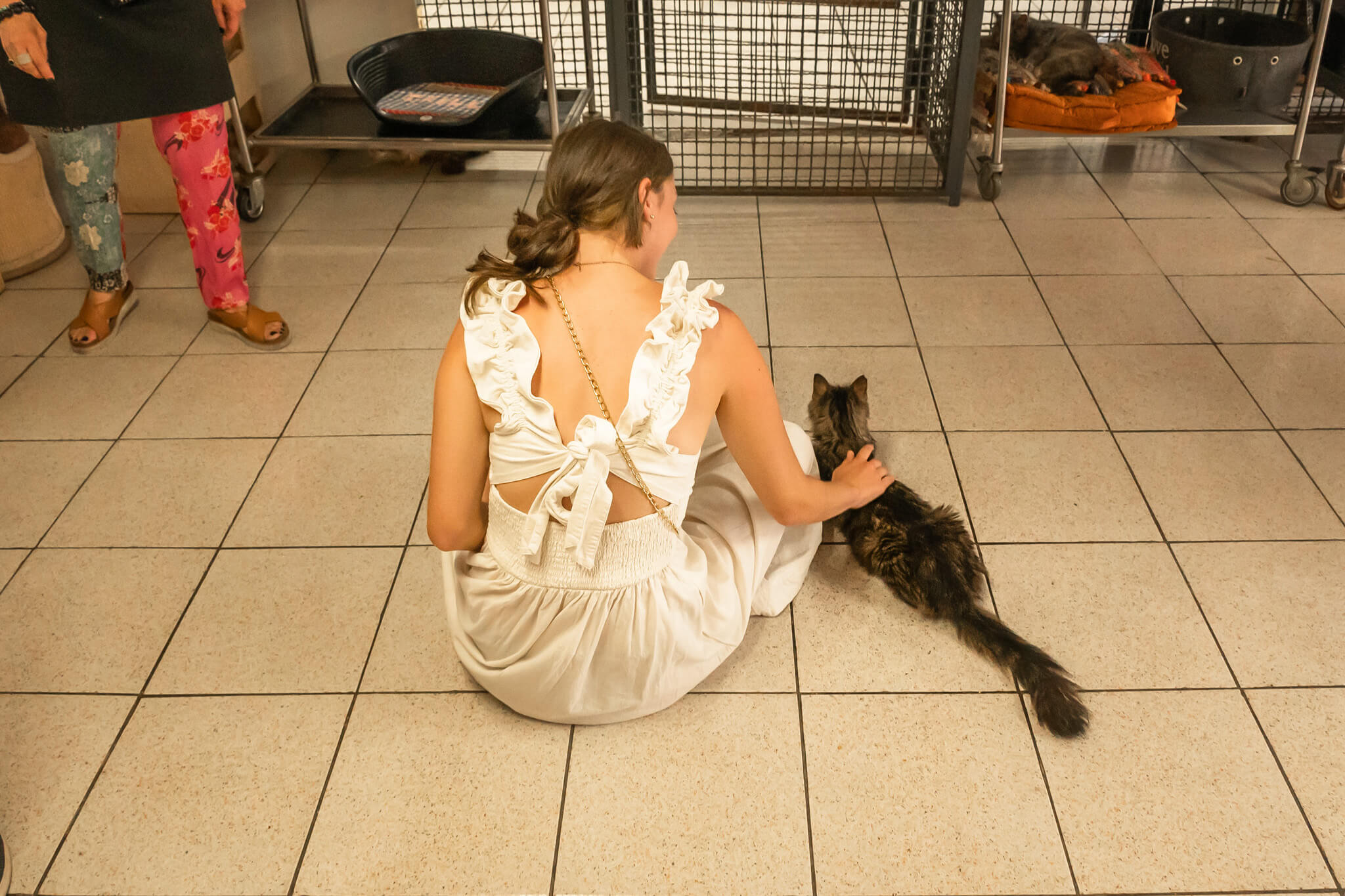
The Sanctuary Depends On Donations
The Torre Argentina Cat Sanctuary is a volunteer-run charity that relies completely on donations to survive. Its success in carrying out its mission is due to the immense dedication and hard work of volunteer staff over decades. The sanctuary not only helps its colony of cats in Rome but also provides financial assistance, when it can, to other cat rescues and sanctuaries throughout Rome.
The Anglo-Italian Society For The Protection Of Animals has been an important benefactor over the years. But an essential lifeline for the sanctuary has been the donations of cat lovers from all over the world, inspired by their visit to the sanctuary while in Rome or by seeing a story, newscast, or blog post.
The Plight Of The Cats In Rome
Interestingly, the Torre Argentina Cat Sanctuary does not own its shelter or anything in or around the Largo di Torre Argentina ruins. The city of Rome does not officially sanction it. The entire site is under the jurisdiction of the city’s cultural superintendency. This means the operation is essentially just a “squatter” with no legal rights.
The issue came to a head in 2012 when an excavation under the street unearthed new ruins of historical significance. The city’s archeological authority wanted to evict the sanctuary, but cat lovers rallied! Volunteers gathered over 30,000 signatures in a petition to defend the sanctuary and its location. The city bent to the public outcry, and the sanctuary was allowed to stay.
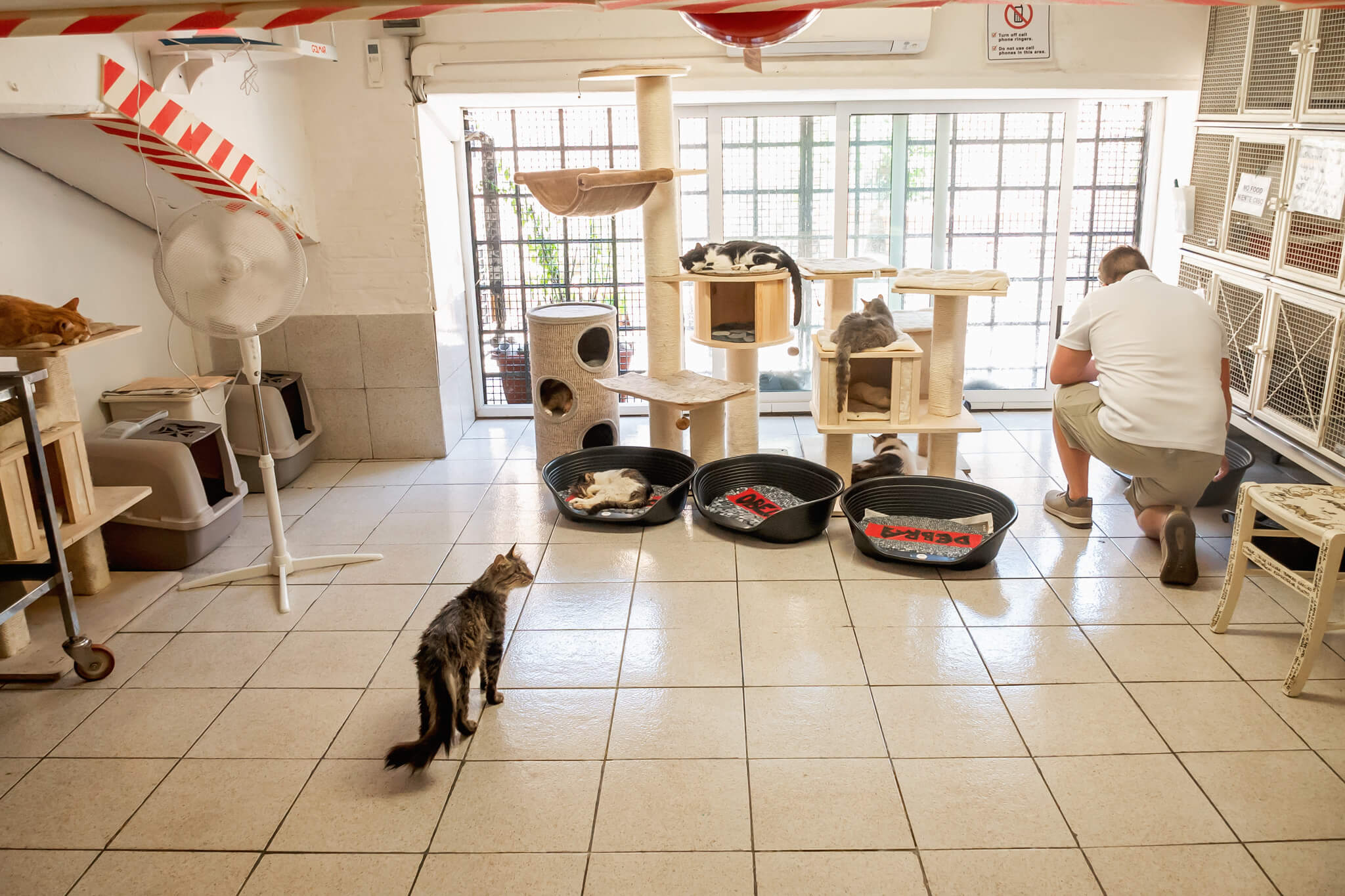
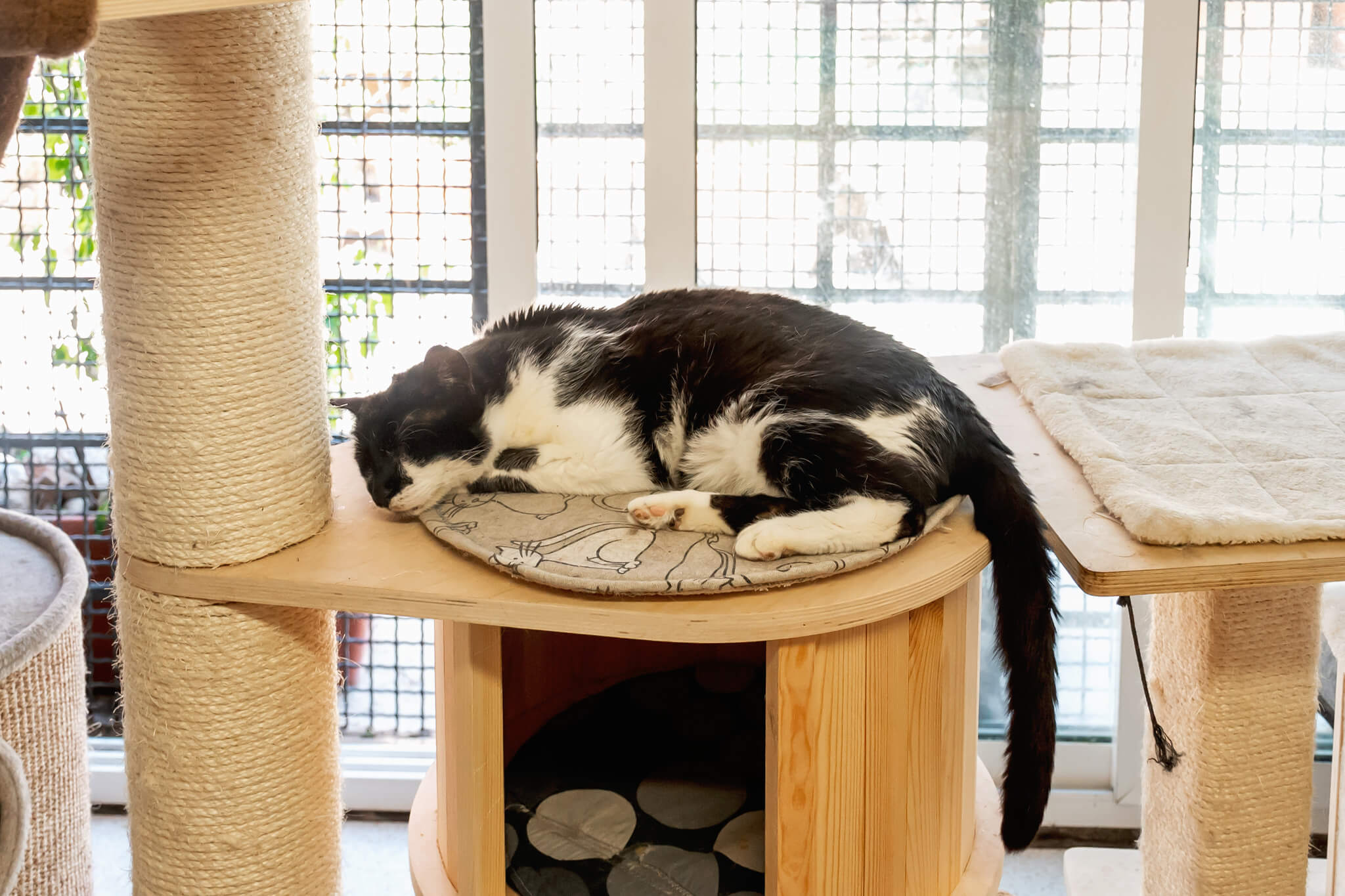
Torre Argentina Cat Sanctuary Healthcare Services
The Torre Argentina Cat Sanctuary provides an array of sterilization, vaccination, healthcare, and cat adoption services. These services are designed to limit the expansion of the feral cat population, ease cats’ suffering, prevent the spread of disease, and find them loving homes off the street. They truly care for these cats in Rome!
#1 Spay and Neutering Program For Cats in Rome
The Torre Argentina Cat Sanctuary’s main mission is to spay and neuter cats in Rome. They spay and neuter cats in their colony. Additionally, they also helped sterilize and vaccinate cats in thousands of colonies across the city. The sanctuary works with local veterinarians to provide this service.
#2 Cat Adoption
The Torre Argentina Cat Sanctuary has an active program focusing on finding loving adoptive homes for cats. On average, the sanctuary finds homes for about 125 cats per year. These cats are sterilized, vaccinated, and placed with their adoptive parents.
They also have a kitten-fostering program. Feral kittens are extremely susceptible to illness in their first few months of life because of their immature immune system. This means that they often cannot fight off many endemic diseases. Foster parents agree to take a kitten for several months. They can then adopt them or bring them back to the sanctuary for adoption by someone else.
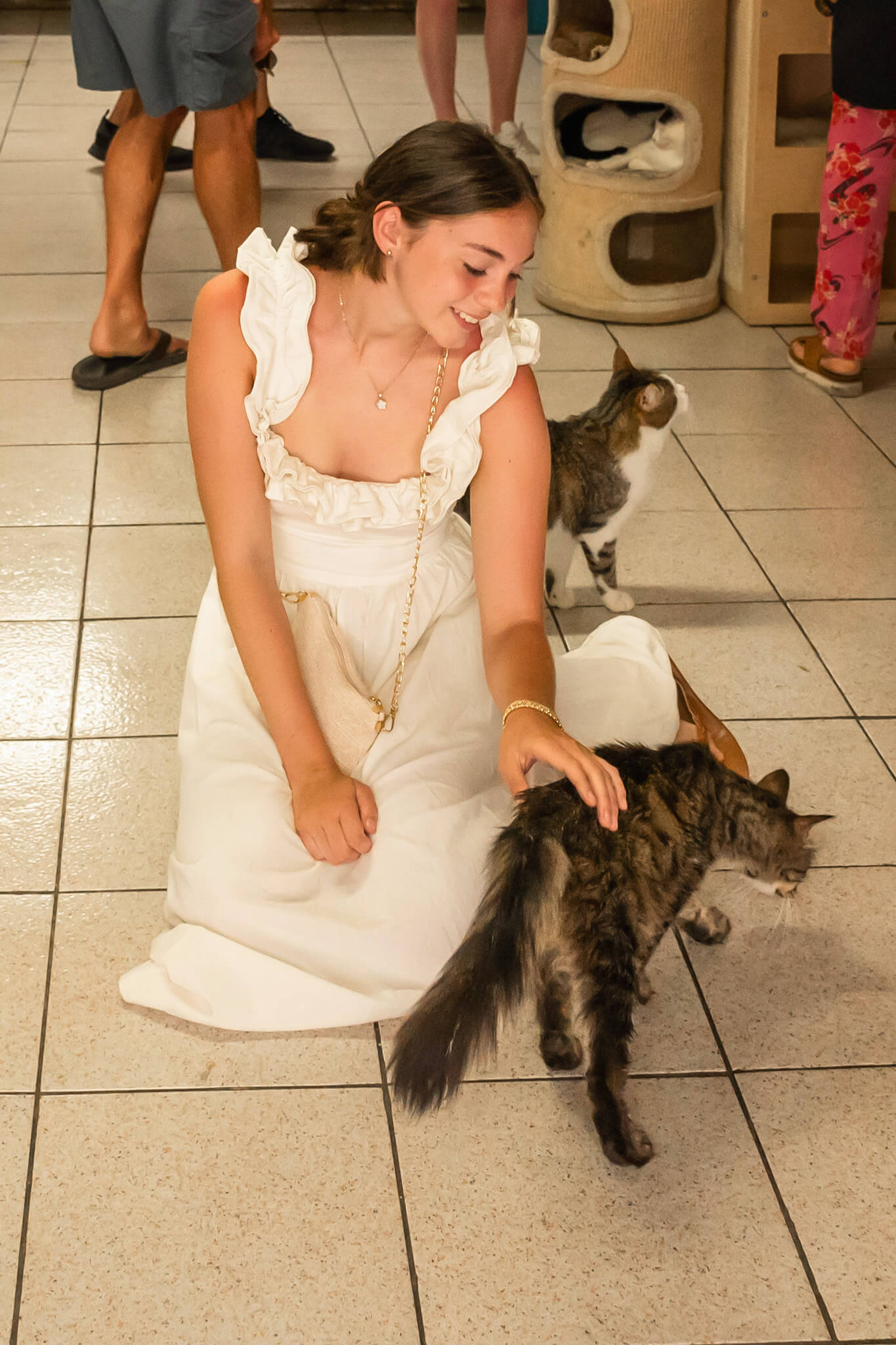
#3 Cat Adoption At A Distance
Many visitors to the sanctuary have fallen in love with one (or all) of the cats. It’s hard not to feel for the plight of the sanctuary, the cats, and the hard-working volunteers. Those who want to help can become members of the adoption at a distance program.
For $15/month, you can “adopt” a Torre Argentina cat. The cat remains at the sanctuary, and this is a virtual adoption only. You’ll receive periodic photos and updates about your cat. It’s a great way to financially support the sanctuary while making a lasting difference in the life of a special feline. I hope you consider adopting one of these previous cats in Rome!
History of the Largo di Torre Argentina and Cat Sanctuary
There aren’t many cat sanctuaries in the world with such a fascinating history. For over two thousand years, these ruins have echoed with stories of violence, mystery, discovery, and hope.
Ancient Roman Temples
The Largo di Torre Argentina ruin was originally an Imperial-Era Roman holy site that contained four temples dedicated to different gods.
These temples are very old and date from as early as the 4th or 3rd century BC. The southern side housed the Baths of Agrippa, and the Theatre of Pompey was on the western side. Quintus Lutatuis Catulus built a colossal statue of the Goddess of Fortune around 101 BC to memorialize his victory at the Battle of Vercellae over an invading Germanic force. You can see the head and one arm of the statue at the Centrale Montemartini museum in southern Rome.

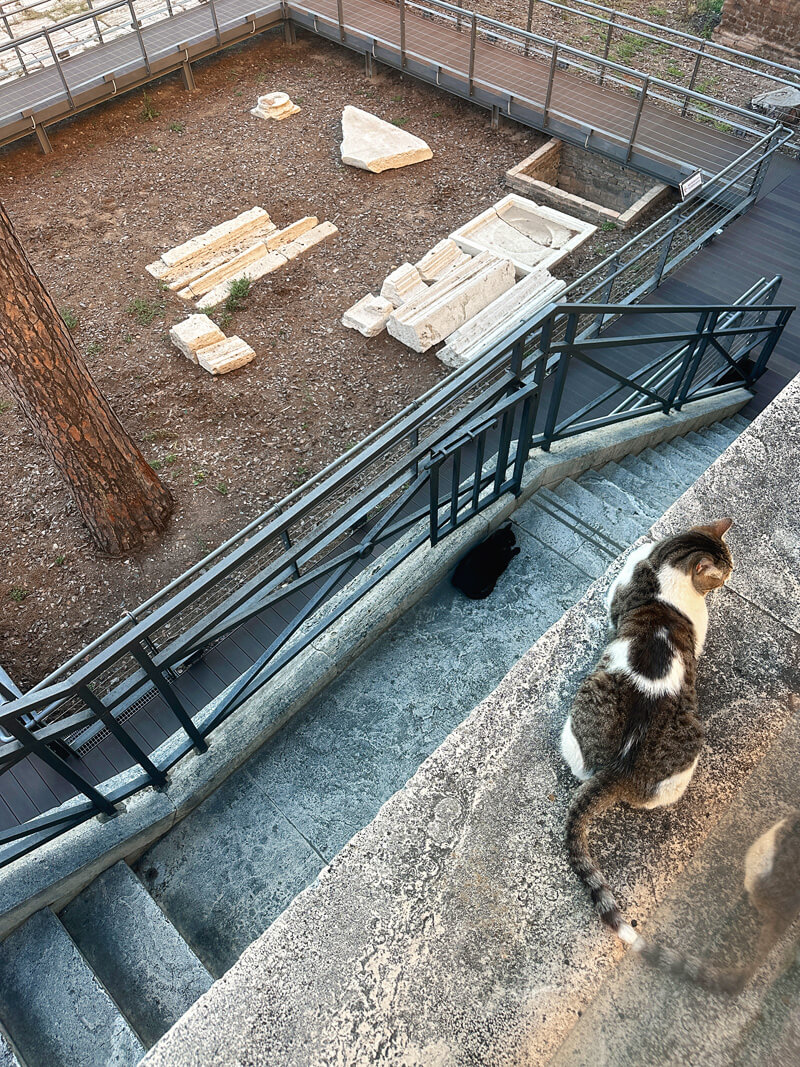
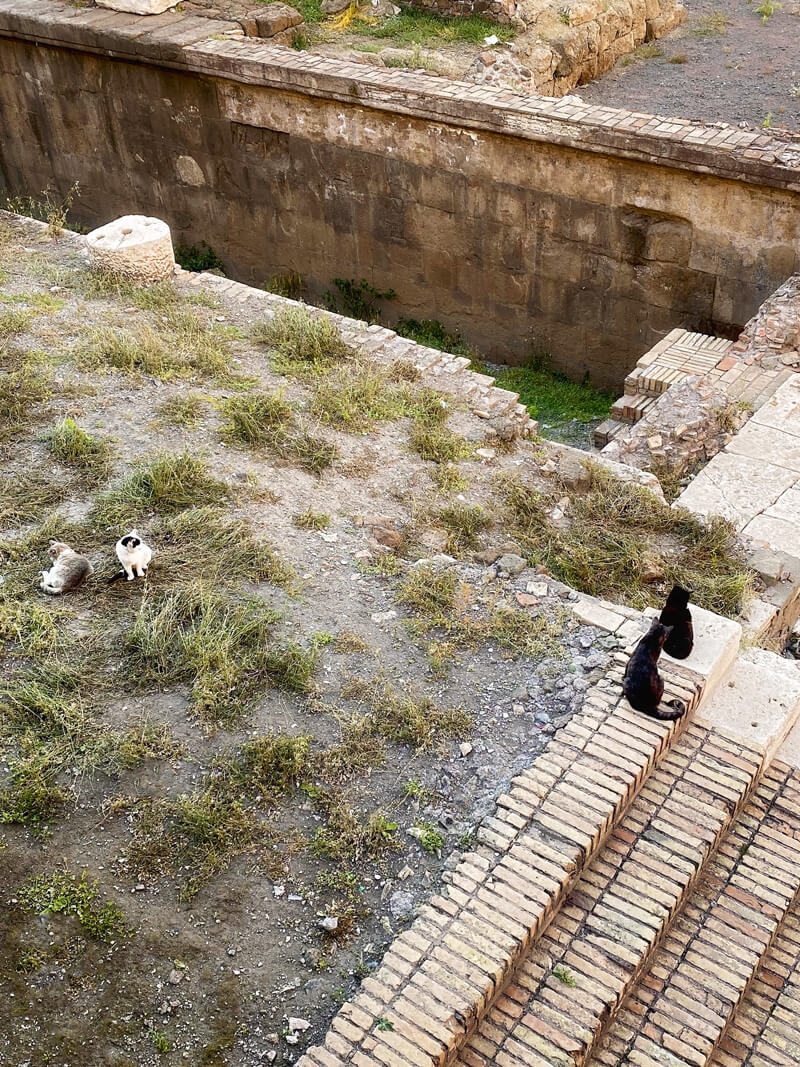
Julius Ceaser’s Assassination in Rome
On the “Ides of March” – March 15th, 44 BC—Julius Caesar was assassinated at the Curia of Pompey, located directly behind the Theatre of Pompey. The site where Caesar was killed was later walled up and perhaps even made into a latrine.
Only the foundations have been excavated, and the modern roadway is raised above the remains of the Curia. In 2012, Roman authorities announced they had found the exact site of Caesar’s murder, which his adopted son marked before the building was destroyed. This renewed interest in the site caused the earlier referenced push to evict the Torre Argentina Cat Sanctuary.
20th Century Discovery And Excavation
During the 1920s, Italian dictator Benito Mussolini ordered the creation of a new neighborhood between Largo, Argentina, Via Florida, and San Nicola dei Cesarini. In 1927, construction workers accidentally unearthed the head of the colossal statue of the Goddess of Fortune erected almost 2,100 years earlier by Quintus Lutatuis Catulus. A battle ensued between the Ministry of Fine Arts and others in the city as to what to do with the newly discovered ruins at Largo di Torre Argentina. The Ministry won, and by 1929, excavation of the site had been completed.

Modern History Of The Sanctuary
After the site was excavated in 1929, feral cats began living in the ruins. They no doubt found the ancient place’s hidden crevasses and shaded niches an attractive location to live. For decades, good-intentioned locals fed and brought water to the feral cats whenever they could.
In the 1950s, a Shakespearean actor from a nearby theatre named Antonio Crast began feeding the cats. At some point, he discovered an old archeological warehouse under the street. Workers used this small grotto as a storage area for tools and other supplies. He somehow got the keys to this warehouse and began using it as a staging area for his efforts to feed the feral cats. It’s said Crast had a heart attack while working in the ruins feeding cats and died beside the animals he loved.
The warehouse key was passed over the years from one person to another, mostly cat lovers connected with the theater. Perhaps the most famous of these good samaritans was Italian actor Anna Magnani. Anna lived close to the ruins. She would go out at night with a basket full of food, wrapped in a scarf to disguise herself, to feed the cats. Anna dedicated much of her time to helping the cats of Torre Argentina and was one of Rome’s most notable gattare or “cat-ladies” in English.
After Magnani’s death, Italian actor Franca Stoppi took over the care of the Torre Argentina colony. Franca had the keys to the warehouse and, for years, tirelessly organized shifts of volunteers to provide a patchwork of caretakers for the cat colony.
Then, the keys came to Lia Dequal. Lia was one of the founders of Torre Argentina Cat Sanctuary. Cats held a special place for her and her husband, sculptor Oreste Dequel. After her beloved Oreste died in 1989, she never remarried and dedicated her life to helping the cats of Torre Argentina. In 1993, Silvia Viviano, a retired opera singer, joined Lia, and they became the co-founders of the Torre Argentina Cat Sanctuary.
In 1993, Silvia and Lia occupied the old warehouse, where they installed running water and electricity and built facilities to house some of the sick cats. This was the beginning of the shelter you see today. And the rest is history – with our family just stumbling upon it and the writing about the cats in Rome in June of 2024.
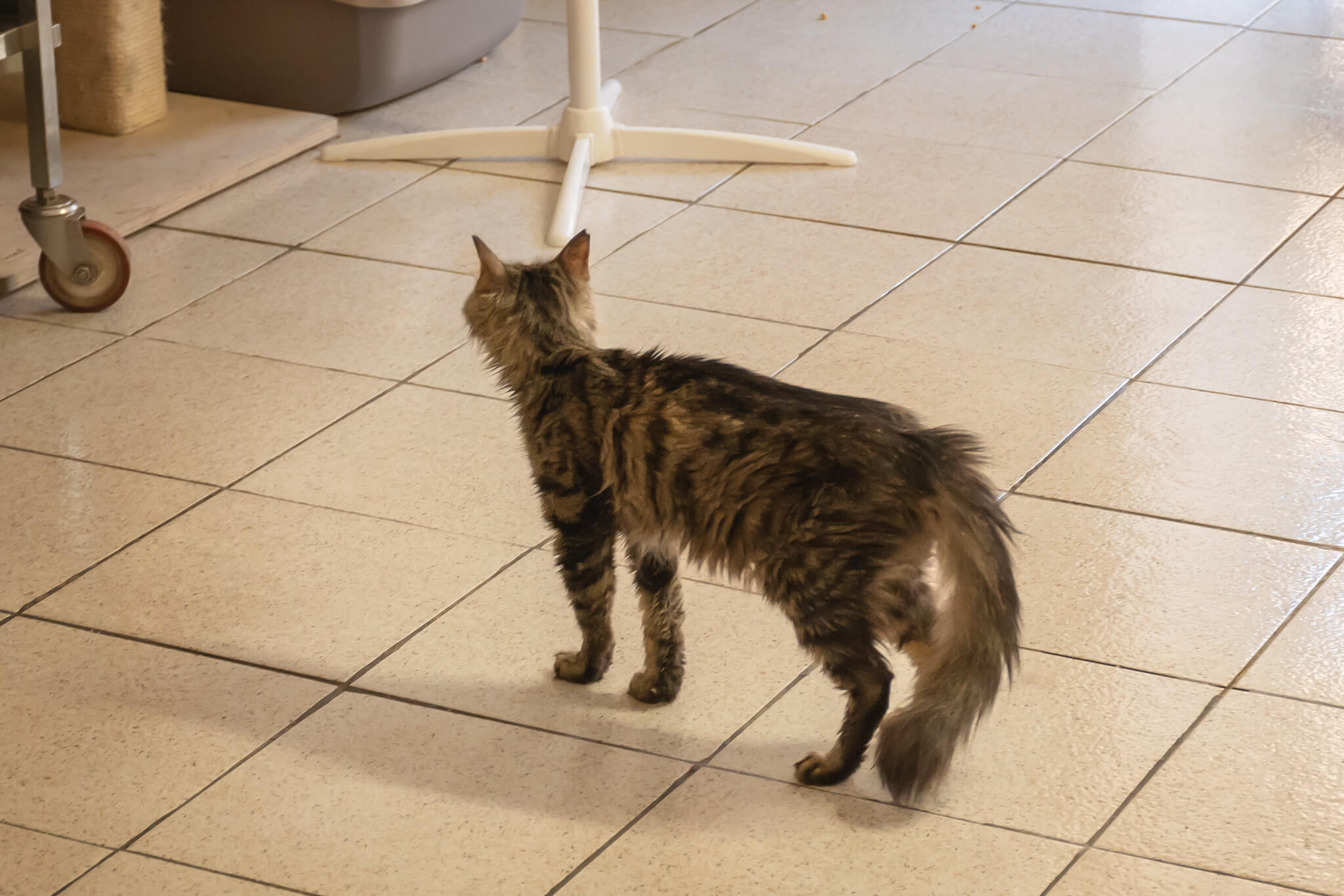
Why Are There So Many Stray Cats In Rome?
In Ancient Rome, cats were valued primarily for their practical role as pest controllers. They were appreciated for keeping homes, granaries, and public spaces free of rodents. The warm climate in the Mediterranean region means mild winters, making Italy a great place for felines to live and thrive.
The ancient open-air ruins dotting the landscape of Rome are particularly great habitats for cats. The ruins provide hiding spots, protection from the elements, and reliable access to rodents, birds, and other prey.
Prior to the development of modern rescues, it was the custom for citizens of Rome to leave an unwanted cat or cats at the Colosseum. Cat colonies grew and flourished all over the city, and it’s believed over 200 feral cats resided at the Colosseum alone.
In 1991, Rome passed a law stipulating that groups of stray cats have a right to live and be fed at their chosen location and requiring health authorities to spay and neuter for free.
Today, it’s estimated there are more than 120,000 stray cats in Rome, spread over about 4,000 colonies.
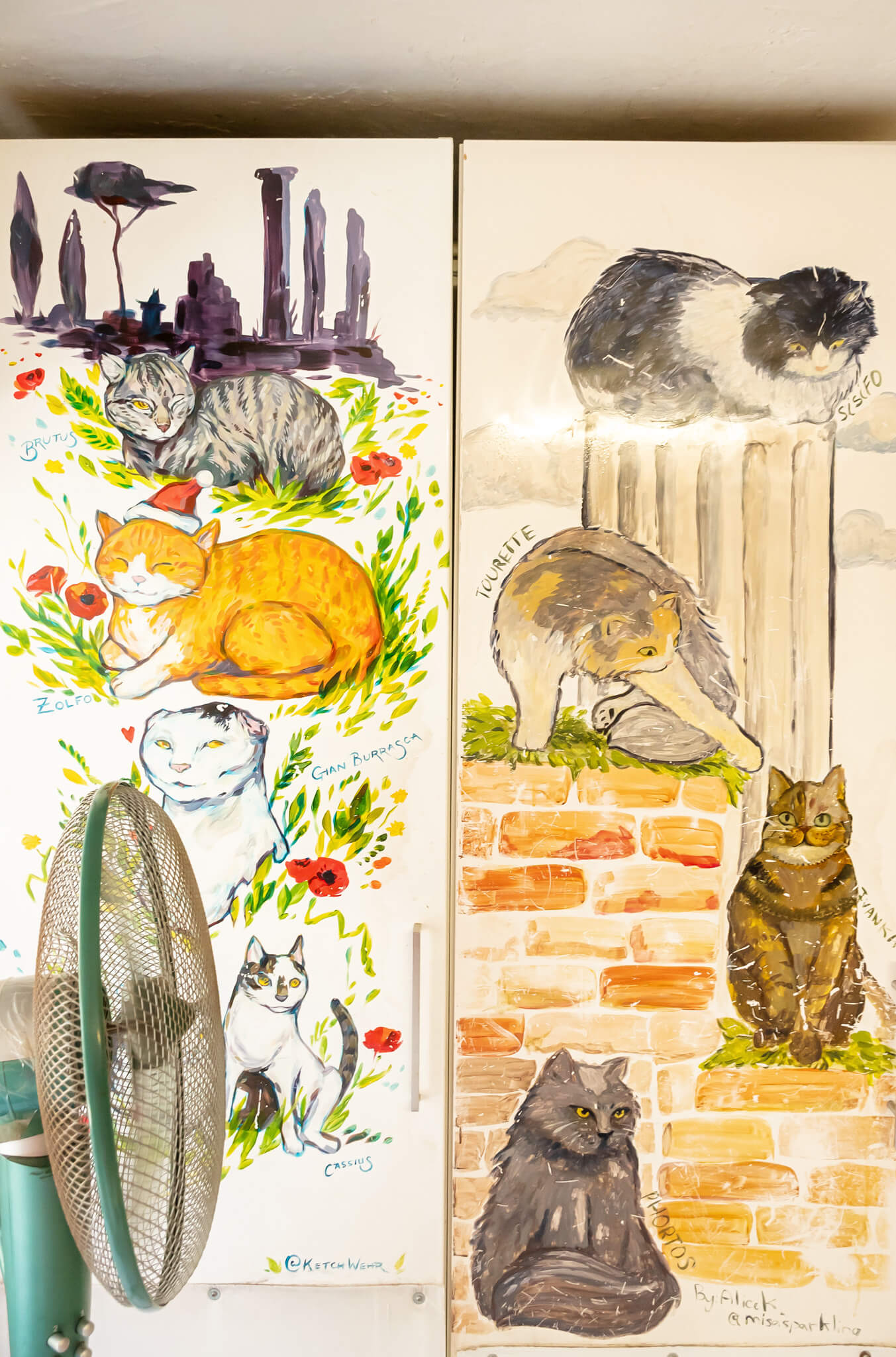
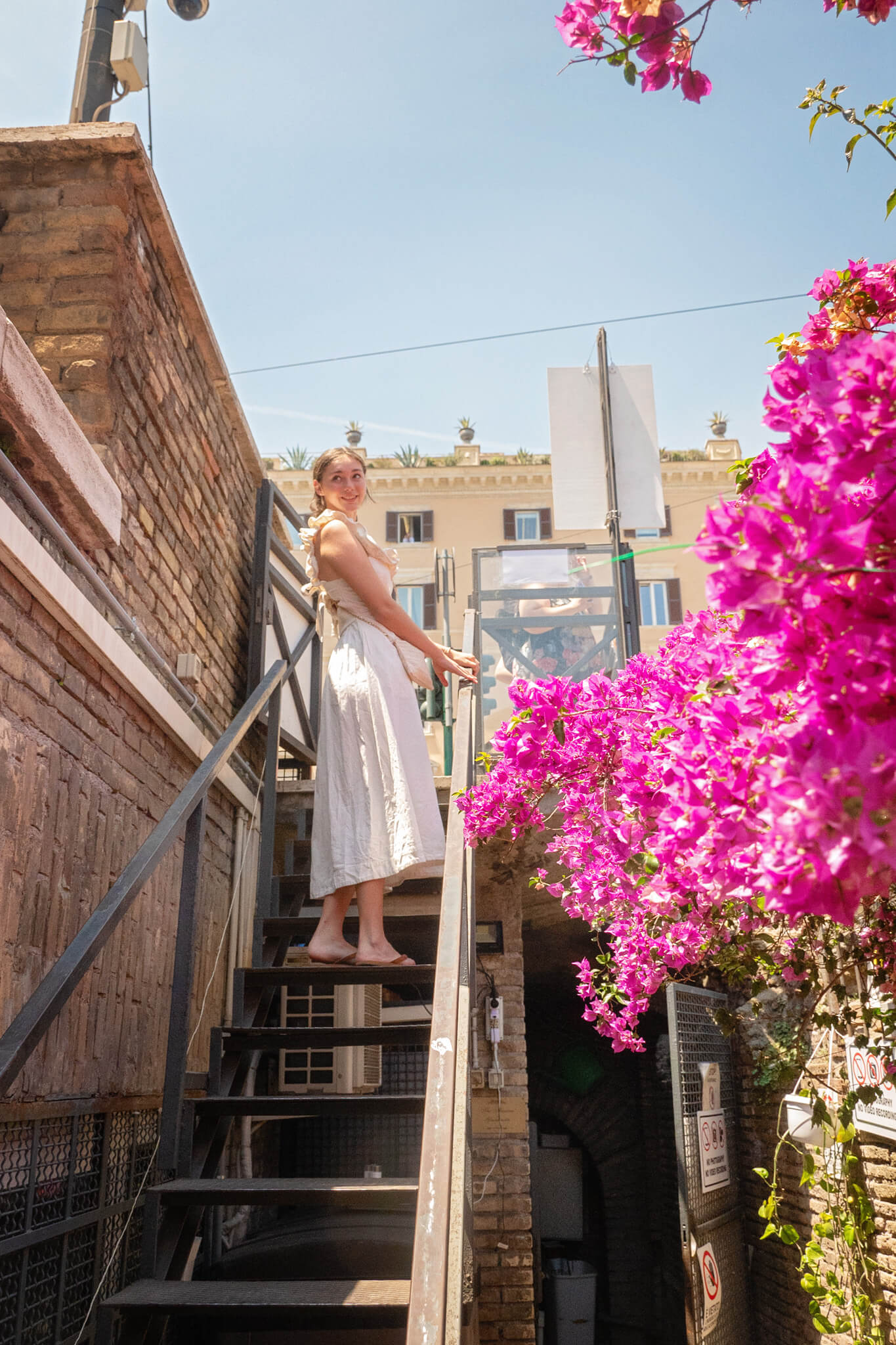
Visiting The Torre Argentina Cat Sanctuary
If you would like to visit these beloved cats in Rome, here is what you will need to know! And it goes without saying, but we highly recommend this unique experience to all cat lovers. It is free to visit, but please bring some cash and consider making a donation. Also, you can purchase a tote bag or gift prior to leaving.
The Torre Argentina Cat Sanctuary is open to visitors every day of the year from 12 pm to 4:30 pm.
Torre Argentina Cat Sanctuary Website: https://www.gattidiroma.net/web/en/
Torre Argentina Cat Sanctuary Address: Largo di Torre Argentina Via Arenula corner (archeological area) – 00186 Roma
Please note that if you want to tour the actual ruins, you need to purchase a separate Archeological Area Largo Argentina Ticket.
The Legacy Of The Cats In Rome
I can’t help but laugh and think the spirit of Caesar lives on in the feisty, free-willed, and loving cats of Torre Argentina. These cats are a testament to the amazing history of the city of Rome, and they dwell at the junction of its ancient achievements and modern dilemmas.
In many ways, the Torre Argentina Cat Sanctuary is the “mother of all cat sanctuaries” where cats and humans harmonize amongst the remnants of a mighty civilization’s fascinating past. Thanks to the gifts of generous volunteers and contributors, the legacy of these cats will live on, reminding us that history is sometimes written by the smallest among us.
More Cat Travel Blog Posts
If you enjoyed this post, you will enjoy reading some of our other worldwide cat travel content. Here are some posts that should interest you!
- KattenKabinet Cat Museum Amsterdam
- What’s Up With The Cats in Greece?
- Visiting the Hemingway House Cats
- Tips For International Travel
- Our Visit To The Pantheon
Pin This Post About The Cats In Rome
